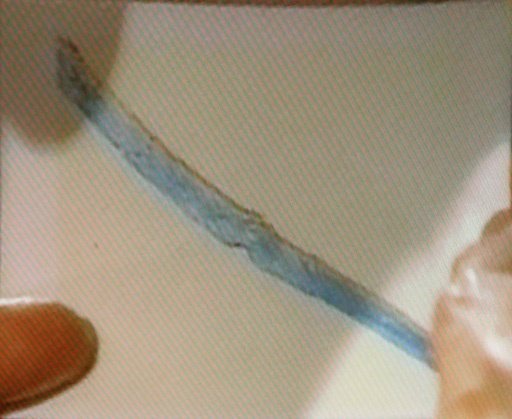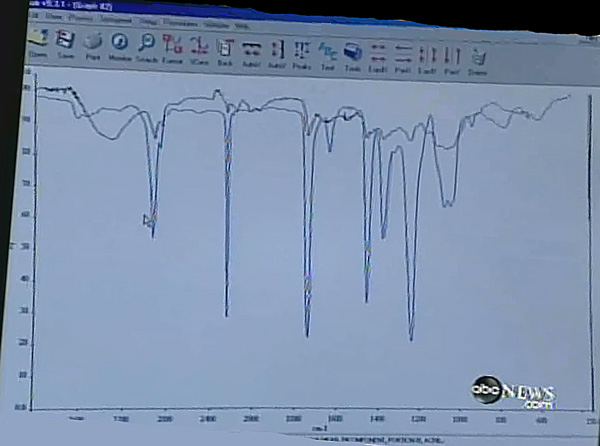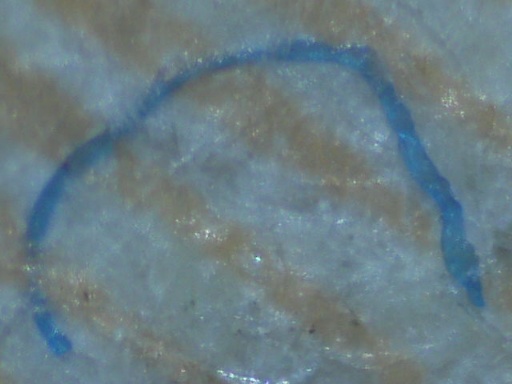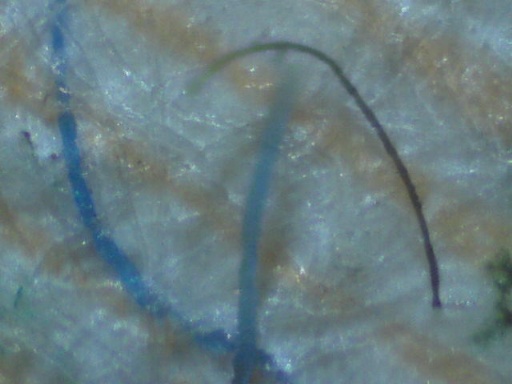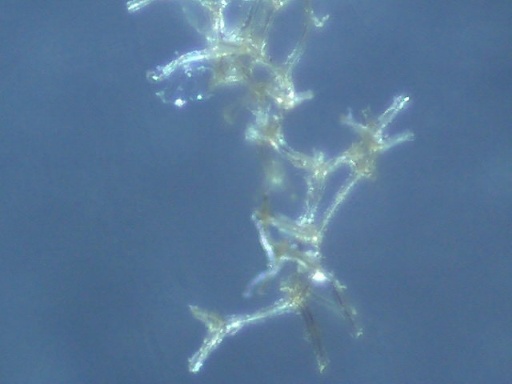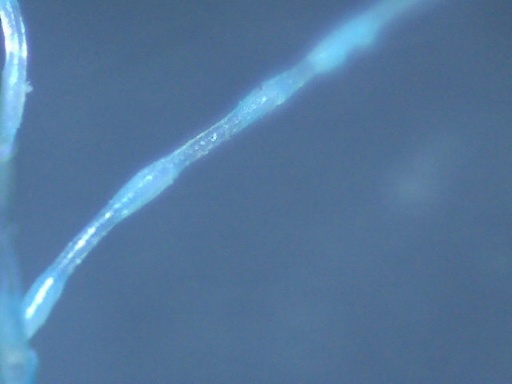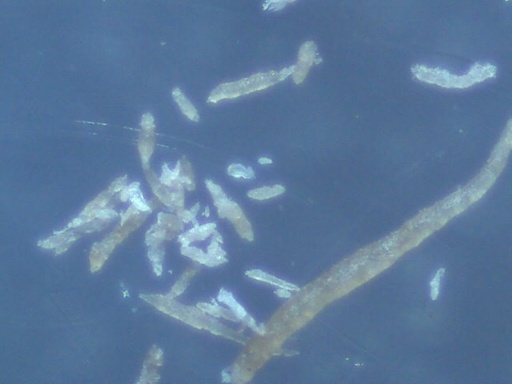“Morgellons Disease” is the name chosen by Mary Leitao in 2002 to represent what she thought was wrong with her son – a disease that supposedly caused eczema-like symptoms on his face, and some fibers she found in the lesions on his skin. Leitao started a web site, other people who though they had a similar disease joined her and began a campaign to publicize the “disease”. Eventually the media picked up the story, public interest grew, more people self diagnosed, people wrote to their congressmen, the CDC started an investigation, more media coverage followed, and more people self diagnose.
“Occam’s Razor” is a maxim attributed to the 14th century friar William of Occam, and goes:
“entities should not be multiplied beyond necessity.”
This is often misunderstood as either “the simplest explanation is the best”, or “the shortest theory is correct”. Take the question “why is there fighting in the Middle East”, the simplest explanation is “God’s will”, but the reality is more complex.
What Occam is saying is that you should not add unnecessary entities to an explanation. However it says nothing about adding necessary entities, nor about how many of them there should be. In many cases the best explanation using Occam’s Razor is neither short, nor simple.
You also need to ask a good question to get a good answer. “What is Morgellons” is not a good question, since it presupposes that Morgellons is something. “What causes Morgellons” is worse, since it assumes the first question is answered. The question that should be asked is:
“What is wrong with all those people who say they have Morgellons?”.
Again, we could go for a simple explanation like “they were cursed by the devil”, but that’s introducing an unnecessary entity (the devil) so fails the test of Occam’s Razor. What about “they have a new disease that causes lesions and fibers”. That too introduces a new entity, a “new disease”. The question Occam would ask here is “is a new disease necessary to explain what is wrong with all the people who say they have Morgellons?”.
In other words: can we explain what is happening to the Morgellons believers without introducing a new entity, without the “new disease”.
One thing is for sure, the explanation is not simple. The wide variety of symptoms make it extremely unlikely that a single pathogen is responsible for all the cases. In fact, only the most ardent supporters of Morgellons will suggest that everyone has the same thing. Even supporter such as Dr. Wymore will concur that a large percentage of the people who post on places such as Lymebusters have some form of delusional disorder, and that the majority of the fibers are simply lint.
But I think I can phrase the answer to “what is wrong with them” in a reasonably short manner:
“They all have different health problems with a superficial symptomatic resemblence, and they mistakenly believe they have the same disease”
That’s a simple explanation. It fits the facts very well. It does not introduce any new entities. Clearly there are lots of different health problems going on. The only commonality is fibers, and that is explained in a very simple manner by them being environmental. What we have introduced here is “lots of different health problems”, but that’s not a “new entity”, since it’s already a given that they have lots of different health problems.
I’ve gone over what those health problems might be in several previous posts. This all simply explains what is going on, in a way Occam would like. But there are a few niggling problems, like red and blue fibers that do not melt at 1400F, that were extracted from under unbroken skin.
Again we are asked to believe one particular answer: “they were produced by a novel organism of a type new to science that creates fibers that can withstand temperatures that would destroy any organic material, and in several colors”, which introduces this rather complex new entity.
In this case we can produce a shorter answer for these particular fireproof fibers: “the fibers came from ouside the body, and slipped under the skin”. There are fibers outside the body, and fibers can slip under the skin, like fiberglass fibers, which melt at 2000F.
The Morgellons phenomenon is a good example of a case of Occam’s razor where the more accurate explanation is more complex than the explanation that introduces new entities. The short answer is “a new disease”, the more accurate answer is “many diseases, known and possibly unknown, combined with many environmental factors”. There’s a lot of entities in that explanation, especially when you look at individual cases, but there are no NEW entities being introduced. Just as the real explanation for the strife in the middle east is vastly more complex than “God’s will”, the real explanation for all the thousands of claims of Morgellons Disease if vastly more complex than “New Disease”.
The real answer is comprised of thousands of different stories, mini-explanations to mini-questions, sub questions to “what is going on with these people”. Like: “why would someone have fireproof blue fibers under their skin and also have neurotic excoriations”
I don’t know the right answer, but I’m going to posit a straightforward one called “Occam’s Hot Tub”.
Some time ago, the patient used a blue fiberglass hot tub. The fiberglass suffered from “fiber bloom” (prevalent in FL, CA and TX, thanks to the weather), which creates loose splinter of fiberglass. The pressure of sitting on and against the tub caused large numbers of these splinters to become embedded in the patient’s skin. The water was also contaminated with Pseudomonas aeruginosa, a bactirium that causes “hot tub folliculitis“. This developed into an itchy rash with many lesions, accompanied by a general sickness. The embedded fibers contributed to the itching. The patient scratched, which made things worse, creating new lesions, and creating an itch-scratch-itch cycle, compounded by a mild OCD. The initial rash cleared up, but the itching continued because of the now neurotic scratching. Normal fibers were found in the lesions. The patient is convinced she has Morgellons. She goes to Dr. Wymore, who extracts some of the fiberglass fibers from under the unbroken skin on her back.
Sure, it’s a long explanation, and we don’t know if it fits the facts, since we don’t know the evidence for the actual case. But if the patient had indeed been in a hot tub sometime in the past, then that would explain the blue fiber a lot simpler than a new disease would. It does not introduce any new entities.
There is no evidence presented that a new entity is required to explain. There is no need for a new disease to explain the thousands of people who self-diagnosed with Morgellons.

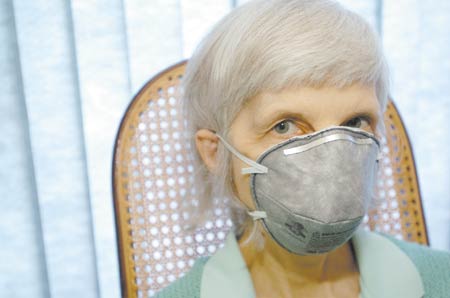
 Here’s another: premenstrual dysphoric disorder, (PMMD), which was listed as treatable by Prozac, but later, in Europe, described as “an invented illness and a strong example of the medicalisation of ordinary life.”. There is some suggestion that PMDD has been “marketed” by drug companies. Again, money plays a strong role in defining the disease.
Here’s another: premenstrual dysphoric disorder, (PMMD), which was listed as treatable by Prozac, but later, in Europe, described as “an invented illness and a strong example of the medicalisation of ordinary life.”. There is some suggestion that PMDD has been “marketed” by drug companies. Again, money plays a strong role in defining the disease.